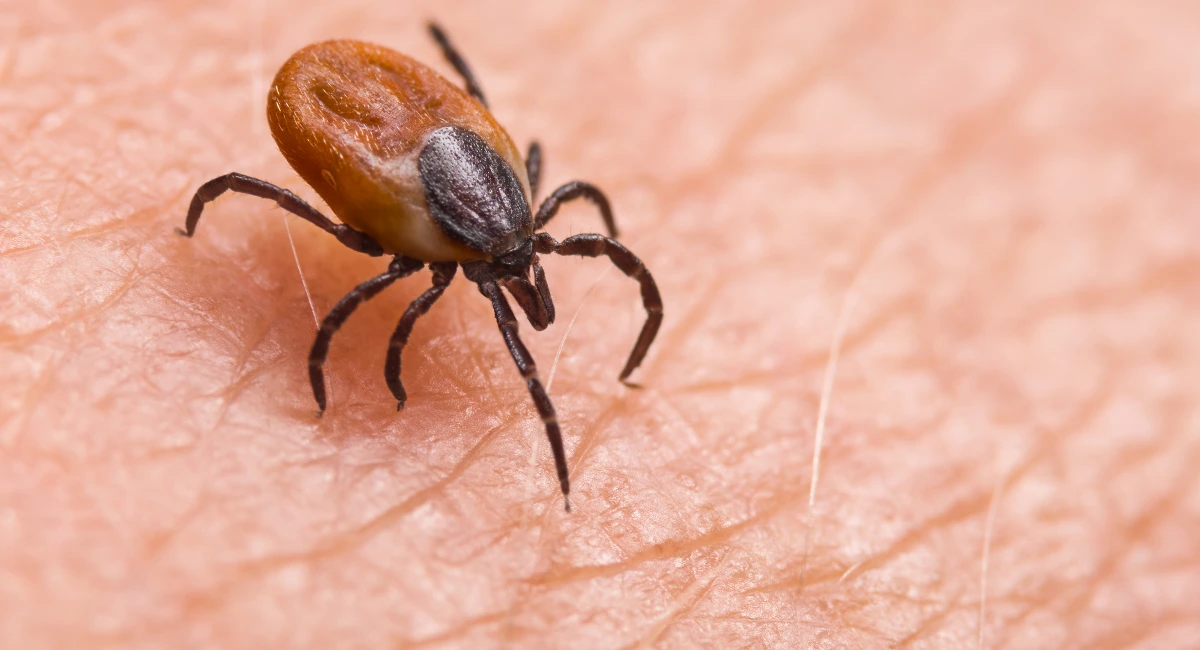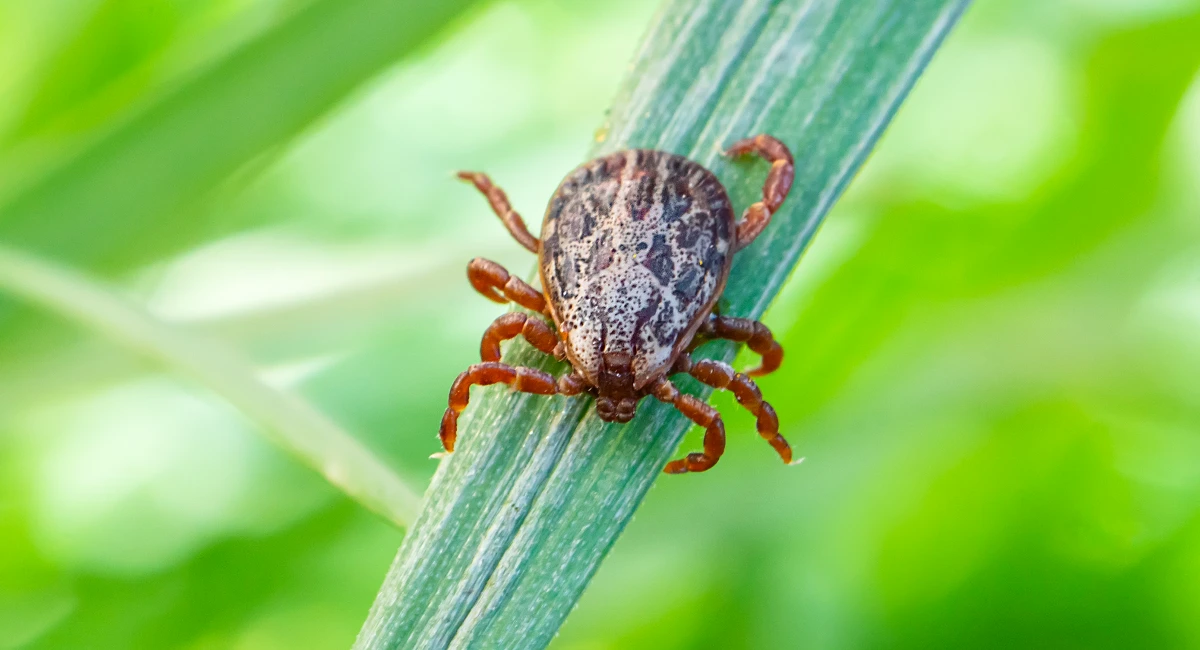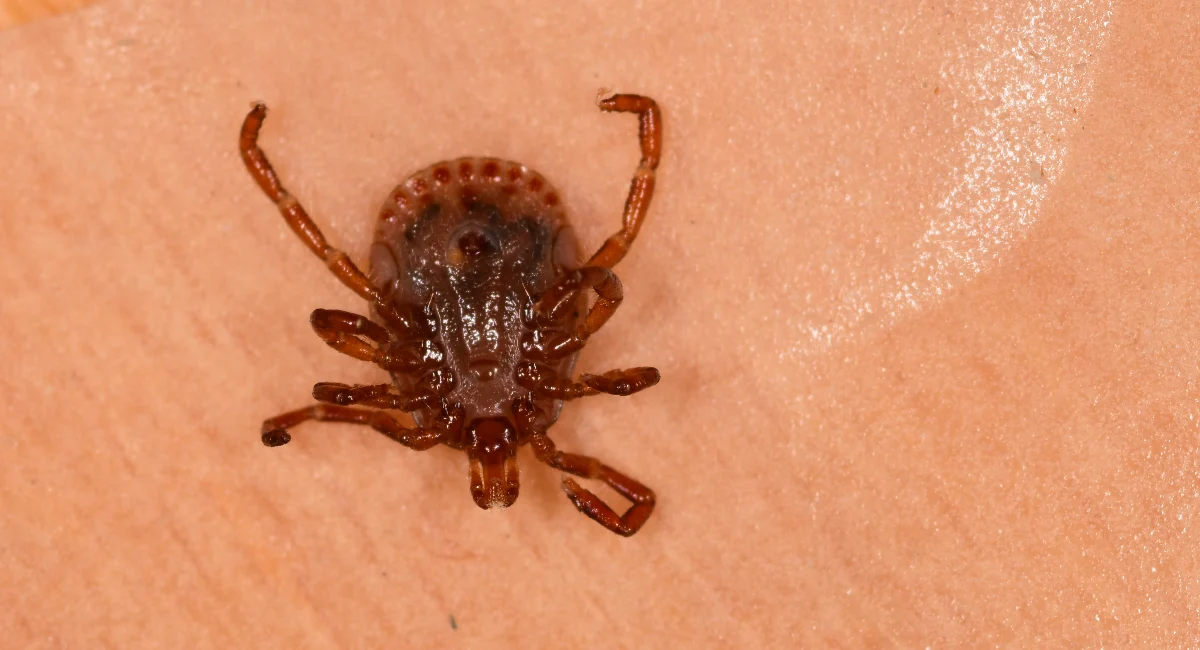For your Home
Login or register for the customer portal
There is nothing better than going on a hike in the fall. The crisp air, the crunchy leaves under your boots, and the beautiful red, orange, and yellow color scheme! Ahhh - seems like there’s nothing to worry about besides taking in the view.
Well, don’t get too comfy. You may just have some unexpected friends on that hike with you, lurking under all of the beautiful leaf litter. Ticks love to hibernate under the fall foliage when it gets colder outside, but they are still looking for something to latch onto. And it may just be you, your family, or your pet.
Did you know that ticks are active in cooler months? Let’s take a look at some of the different types of ticks you may encounter this fall.
Concerned about ticks invading your backyard? Contact us today for tick control!

Ticks remain active as long as temps are above freezing and no snow is present. They love to latch on to a warm host in the fall and winter months. Below we look at the top four types of ticks in the eastern United States that you may encounter this fall.
The blacklegged tick (deer tick) is by far the most active in the fall compared to other common ticks in most eastern regions. Adult blacklegged ticks are active October through May as long as temperatures remain above freezing. They hang out on the branches of low-growing shrubs or on the ground in leaf litter. These ticks tend to prefer larger hosts, like deer, but they do readily attack humans and their pets. The blacklegged tick is the most concerning type you may run into as nearly 50% of them carry Lyme disease. They can also transmit babesiosis and anaplasmosis.

The lone star tick is found in almost all regions of the east, but in the fall, it is predominantly active in the northern regions. Named for the whitish dot on the females’ backs, these ticks can be found at the tips of low-lying branches and in tall, shaded grass. They are incredibly aggressive and love to bite humans. Adults are active from April through late August while their larvae are active through October. Luckily, the larvae do not carry diseases, but the adults can transmit Rocky Mountain spotted fever, ‘Stari’ borreliosis, and ehrlichiosis. Being bit by a lone star tick can also cause some people to develop a red meat allergy.

The American dog tick is found throughout the eastern and central regions of the United States. These ticks are most active from April through early August and are typically found in grassy fields with little or no tree cover. The American dog tick likes to attack humans near the crown of the head and also feeds on animals ranging in size from rodents to livestock. This type of tick can transmit diseases such as the Rocky Mountain spotted fever and tularemia.

Active in the southern regions of the East Coast, the Gulf Coast tick feeds on both humans and animals. Gulf Coast ticks are active from April through October with peak tick encounter risk in July and August. They like to hang out in prairie grass areas and shady, wooded edges. Gulf Coast ticks can transmit Rickettsia parkeri rickettsiosis, which is a form of Rocky Mountain spotted fever.

It’s important to note that the brown dog Tick is also active throughout the United States, though this type of tick prefers dogs over humans. This interactive map shows an in-depth month-by-month breakdown of the type of ticks that are most active in your region throughout the year. It’s a great resource for understanding what types of ticks are around you, and when.
Short answer: Yes. The blacklegged tick, a major transmitter of Lyme disease, is very prevalent and extremely active in the fall. If an infected blacklegged tick bites you, you may experience a fever and notice a bullseye-shaped rash at the site of infection. If not treated, neurological symptoms such as loss of muscle tone in the face (Bell’s palsy), meningitis, speech and memory loss, and shooting pains can arise. It may also cause cardiac symptoms such as inflammation of the heart (myopericarditis).
In the fall months, be cautious when raking leaves in your yard or mulch beds as the blacklegged tick loves to hide in those areas. Always make sure to check your body and clothing for any ticks before you come back inside. The blacklegged tick can also latch onto your pet and then transfer from your pet to you, so make sure to check your furry friend before they come inside, too!

Prevention is key when it comes to protecting yourself from ticks. Follow these top tips before and after being outside this fall to keep yourself safe.
Keep exposed skin to a minimum - wear long pants, long sleeves, closed-toed shoes, and tuck your pants into your shoes or socks.
Use an EPA-approved bug spray.
Avoid tall grass and heavily wooded areas; walk in the center of any hiking trails.
Check your clothing and body for ticks including under your arms, in and around your ears, inside your belly button, behind your knees, in and around your hair, between your legs, and around your waist. (Don’t forget to check your kids and pets, too!)
Shower right away after being outdoors.
We also recommend wearing light-colored clothing if you plan to be in a tick-prone area. The brownish/red ticks will stand out more easily on lighter colors, so you will be able to spot them if they decide to hitch a ride with you.

If you do find a tick on your body, it’s important to remove it safely with fine-tipped tweezers. Make sure to pull upward with steady, even pressure to remove the entire tick. If the head remains intact, it can still transmit disease. After removing the tick, clean the area and dispose of the tick by wrapping it tightly in a sealed container.
Unfortunately, as you may have realized, tick season is pretty much every season. No matter if it’s hot or chilly, ticks are still active. The potential transmission of Lyme disease is the number one reason why tick control and prevention is a necessity for homeowners. Ticks can be hiding in leaves in your yard, mulch, and landscaping. It’s important to control them.
Call Ehrlich at 888-984-0186 for all your tick control services so you can worry less about you or a family member being bitten by a dangerous, disease-carrying tick.
Our new pricing tool can help you get a better estimated cost using a few factors like: